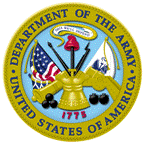United States Department of Defense
Document Type
Article
Date of this Version
2011
Citation
FROM: Leadership in Dangerous Situations : A Handbook for the Armed Forces,
Emergency Services, and First Responders. Edited by Patrick J. Sweeney,
Michael D. Matthews, and Paul B. Lester (Annapolis: Naval Institute Press, 2011).
Abstract
First Sergeant Spock, in Afghanistan during his fourth deployment after 9/11, recalls a mission from June 2007 in Iraq. Improvised explosive devises (IEDs) had become the unsuspecting killer in his area, and his infantry platoon was on a mission to capture a key insurgent responsible for emplacing them. They had killed one of his soldiers and wounded eighteen other comrades. It was so likely that his platoon was going to hit an lED during the mission that his commander assigned a route clearance team (ReI) to his platoon. The RCf gave Spock some comfort, but it quickly faded when he received word that an RCf vehicle had broken down. His platoon faced the dilemma of having to wait for mechanics to fix the vehicle and jeopardize the mission or to move on and run the risk of hitting an lED exploSion. Spock describes how he knew that his decision might cost him his life and the lives of his fellow soldiers, but he knew the mission was too important to delay. If anyone was going to take the additional risk, it was going to be him, so with his heart racing, he looked at his driver with as much confidence as he could muster and said, "Take the lead. We are going to the objective." Spock recalls that his driver didn't show the slightest doubt or fear in his face. Without hesitation, his driver stepped on the gas and their vehicle raced to the objective, first in the order of movement. Fortunately, Spock's platoon captured its target, without injury, which greatly reduced the number of IEDs for the remainder of the deployment.



Comments
US government work